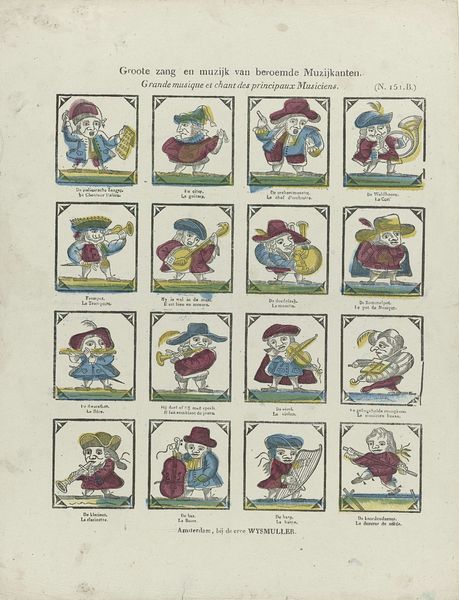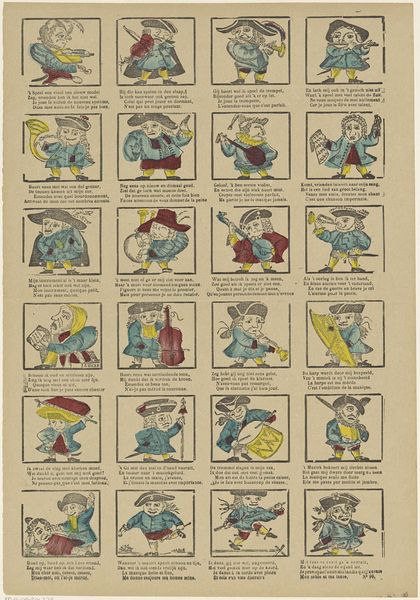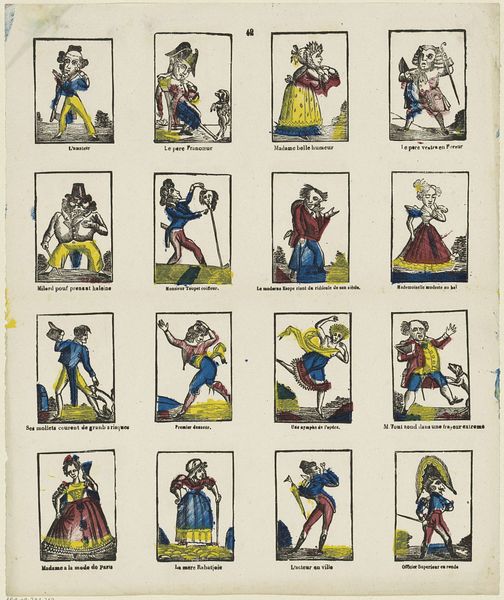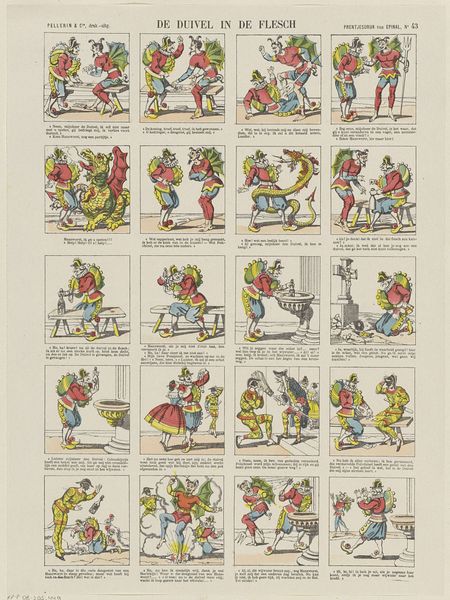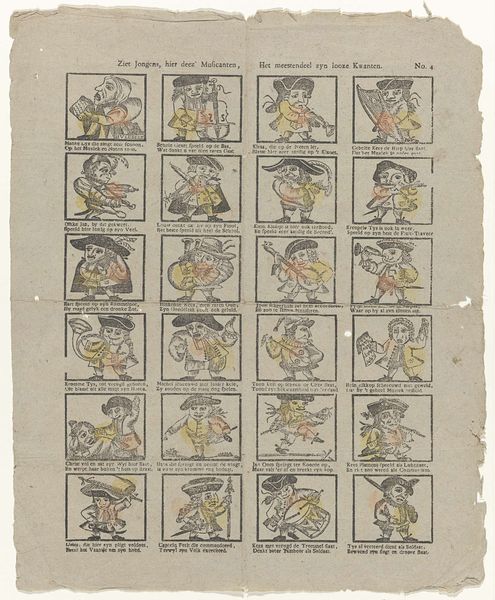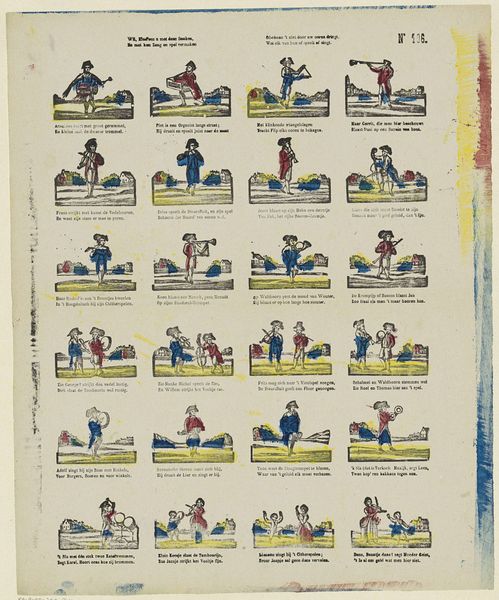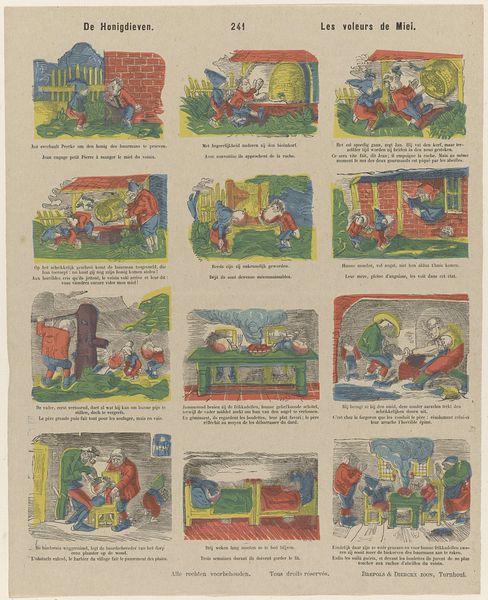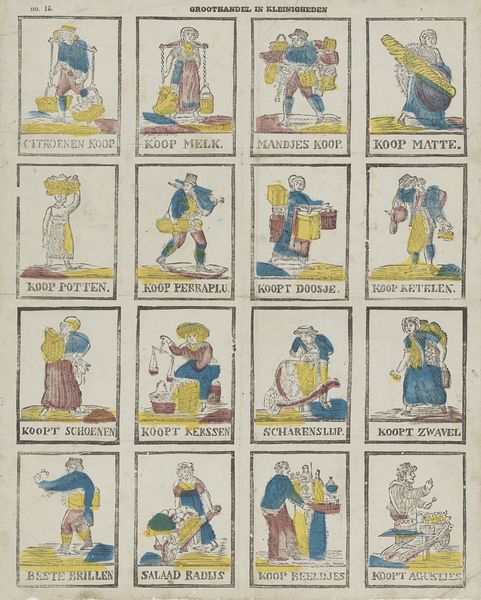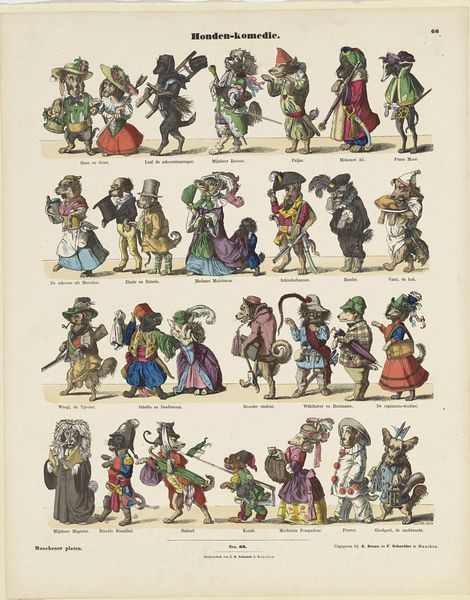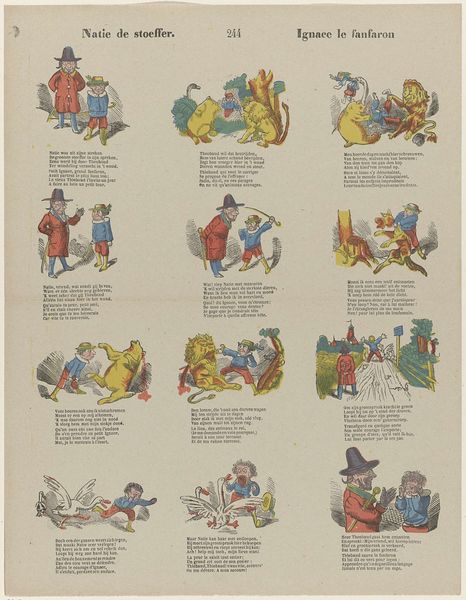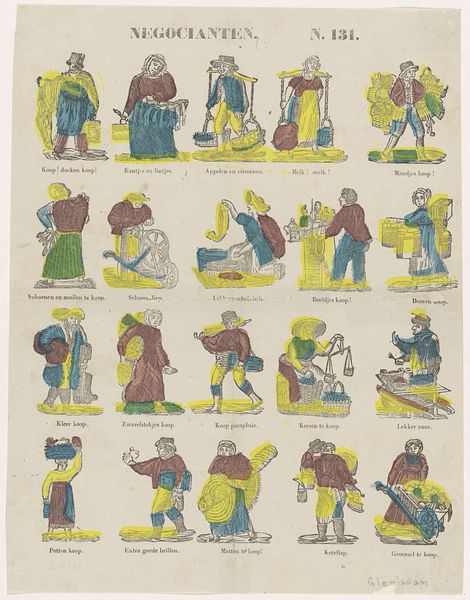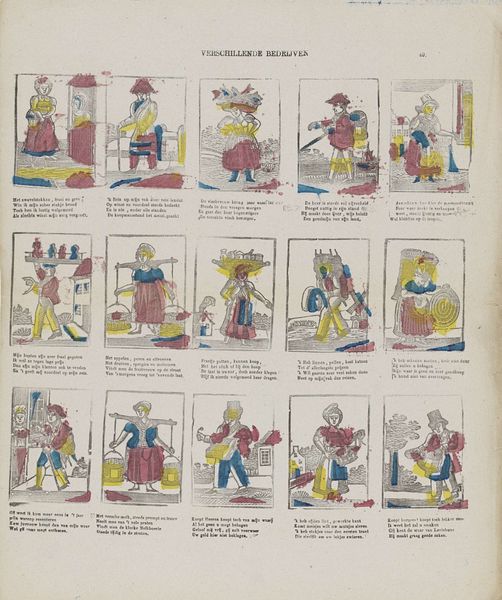
Groote muziek en zang van beroemde muziekanten / Grande musique et chant des principaux musiciens 1833 - 1911
0:00
0:00
#
portrait
#
comic strip sketch
#
quirky sketch
# print
#
sketch book
#
personal sketchbook
#
sketchwork
#
journal
#
comic
#
sketchbook drawing
#
watercolour illustration
#
genre-painting
#
storyboard and sketchbook work
#
sketchbook art
Dimensions: height 385 mm, width 293 mm
Copyright: Rijks Museum: Open Domain
Editor: This print, titled "Groote muziek en zang van beroemde muziekanten," dating from between 1833 and 1911 and created by Brepols & Dierckx zoon, shows these amusingly rendered musicians with their instruments. It reminds me a little of a very early form of a comic book, though it is not very funny! What do you see in this piece? Curator: I see a fascinating glimpse into 19th-century popular culture and the construction of musical identity. This wasn't created as "high art" intended for an elite audience but rather as a print likely aimed at a broader public. Editor: Interesting. Curator: Yes. Consider the way the musicians are presented – they're almost caricatures, immediately recognizable by their instrument and distinctive dress. How do you think these images might have shaped the public’s perception of these different musical roles? Editor: I guess it solidified certain stereotypes, maybe reinforcing class distinctions too? Like, were some of these instruments considered more 'refined' than others, and reflected the position of those musicians in society? Curator: Precisely. Furthermore, we should analyze how the act of printing itself—its distribution, its cost, its very existence as reproducible art—democratized access to imagery and ideas. Prints like these served as powerful tools, influencing the collective imagination. What I find particularly revealing are the captions beneath each figure, presented in both Dutch and French. Editor: Ah, indicating its target audience was bilingual, perhaps reflecting Belgium's linguistic landscape? I hadn't considered that aspect. That makes it really interesting to understand. Curator: Indeed. Analyzing visual culture necessitates exploring production, distribution, and reception, revealing the complex interplay between art, society, and power. It makes me consider who got to represent who in culture, then and now! Editor: So cool – I’ll definitely look at images more closely in this way in the future.
Comments
No comments
Be the first to comment and join the conversation on the ultimate creative platform.
